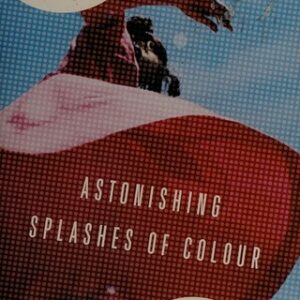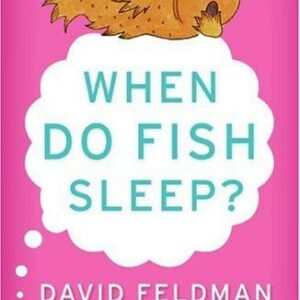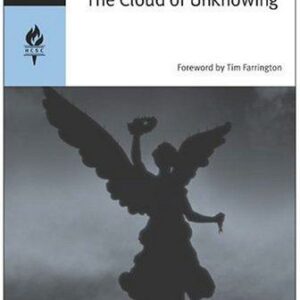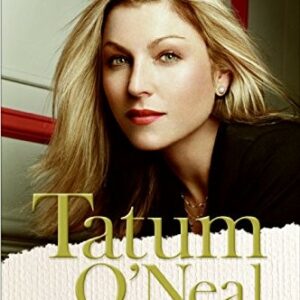In Pursuit of Silence
$22.00
| Title | Range | Discount |
|---|---|---|
| Trade Discount | 5 + | 25% |
- Description
- Additional information
Description
An “elegant and eloquent” (New York Times) exploration of the frontiers of noise and silence, and the growing war between them.
Between iPods, music-blasting restaurants, earsplitting sports stadiums, and endless air and road traffic, the place for quiet in our lives grows smaller by the day. In Pursuit of Silence gives context to our increasingly desperate sense that noise pollution is, in a very real way, an environmental catastrophe. Traveling across the country and meeting and listening to a host of incredible characters, including doctors, neuroscientists, acoustical engineers, monks, activists, educators, marketers, and aggrieved citizens, George Prochnik examines why we began to be so loud as a society, and what it is that gets lost when we can no longer find quiet.
“Elegant and eloquent.”—New York Times
“[A] genial and informative study of the noisiness of modern life.”—The New Republic
“An adventure of profound listening.”—The New Yorker
“Fascinating.”—Salon
“A global quest to find those who still value silence.”—NPR
“Sometimes alarming and often charming, it sings the praises of quiet and reports the uncertain progress in the war against noise.”—The Dallas Morning News
“Compelling.”—Bookforum
“Smart… Silence is good for falling asleep, but Prochnik’s attentive take on noise keeps us wide awake.”—Publishers Weekly
“Elegant and understated, this thoughtful look at rarely considered aspects of everyday life reveals an often unrecognized cost of modern living.—Booklist
“A lucid, balanced appreciation of silence’s solemn tonic.”—Kirkus Reviews
GEORGE PROCHNIK is the author of Putnam Camp: Sigmund Freud, James Jackson Putnam, and the Purpose of American Psychology, a New York Times “Editor’s Choice” pick and winner of a 2007 Gradiva Award. He has written for the New York Times, the Boston Globe, Playboy, and Cabinet magazine, among other publications. He lives in Brooklyn.
Chapter One
Listening for the Unknown
On my second night in the monastery, I heard the silence. I was inside the church: a beautiful, vast chamber of limestone blocks that resemble lumpy oatmeal and were quarried from the Iowan earth by the monks themselves in the mid-nineteenth century. Themonks had finished compline, the last of the day’s seven prayer services, and had filed off into the inner recesses of the monastery, where they would observe the Great Silence, speaking to no one until after mass the next morning. The last of the monks toleave had switched off the lights above the choir, and then the light over the lectern. Though the section of visitors’ pews where I sat still had a little illumination, the body of the church was now in total blackness except for the faint flickering of avotive candle suspended high in the distance against the far wall. For the first quarter hour, a few worshippers remained on the benches around me.
Although I sat very quietly, I found my mind busy and loud. Mostly I was reflecting on the service I had just heard, which Brother Alberic, my gracious liaison to the world of the monastery, had described as a kind of lullaby. Compline is lovely, and Iwas frustrated that I had not been able to find it more profound. These weren’t my prayers. I yearned only for more quiet. My thoughts were noisy enough that I half expected to see them break out of my skull and begin dancing a musical number up and down thewooden benches.
Soon the other worshippers departed and I was left alone. For a moment or two, my experience was of literal silence. Then, all at once, there came a ting, a tic, another tic, a tap, and a clang. The sounds came from all around the enormous dark church.They ranged from the verge of inaudibility to the violence of hammer blows; discrete chips of sound and reverberatory gonnngs. Out of nowhere, I was treated to a concert by the sound of heat in the pipes. It was a grand, slightly menacing sound that I had beenoblivious to not only during the prayer service but afterward in the din of my mental dithering. And it was worth that long opening pause. The ever-changing sonic punctuation of this empty space–which had first seemed soundless–gave me a tingling sense ofelevation. This is it, I told myself. Silence made everything resonate.
And yet . . . Later that night when I retreated to my room, and my euphoria had subsided, I wondered why I had been affected so powerfully. Objectively, the only thing that had happened, after all, was that I had heard the metal of the pipes expandingand contracting as they heated and cooled. Why should that experience have made me feel that I was “hearing the silence” ? Why did I feel at that lonely hour that I had found what I was looking for when I came to the monastery?
What brought me to the New Melleray Abbey in Dubuque, Iowa, was the desire to learn from people who had made a lifelong commitment to devout silence. Trappist monks, a branch of the Cistercian order, do not make a vow of total silence, and today thereare times when they engage in conversation; but silence is their mother tongue. Saint Benedict, who is credited with founding Western Christian monasticism in the sixth century, most famously at Monte Cassino, southeast of Rome, wrote a document known as theRule that remains their guide to this day. In the Rule, monks are defined before all else as disciples, and the defining quality of the disciple is “to be silent and listen.” Trappists are among the monks known as “contemplatives.” Their interaction with theworld outside the monastery is minimal. Much of their worship is silent. They study in silence. They work almost entirely in silence. They eat primarily in silence. They pass each other in the monastery corridors without speaking. They retire at 8 pm to separatecells and rise at 3:15 am, when they gather in silence to pray. They avoid idle talk at all times. And even after the morning mass, throughout much of their demanding day, they are discouraged from speaking. Almost everything the Trappist does takes place insilence–is pressed close by its weight, or opens out onto that expanse, depending on how you look at it.
Monks have, moreover, been at the pursuit for quite some time. Alberic remarked at one point that while it is often said that prostitution is the oldest profession, he believes that monks were around before there were prostitutes. This struck me as unlikely,but it still gave me pause.
There was a personal stake in this journey as well: I needed a break. I’d had a hectic, noisy winter in the city–medically harrowing, filled with bills, the hassles of insurance claims, technology fiascos, and preschool worries. Plans to visit friendsin the country had fallen through several times. I’d tried to go to a Zen retreat in New England that taught the breath- and silence-based meditation practice of vipassana, only to be told at the last moment that although I could come and sit silently withthe retreatants, the guesthouse itself was overbooked and I’d have to stay in a bed-and-breakfast in town. The thought of beginning my daily practice over fussy French toast in a dining room packed with antiquers–where tasteful classical music would be pipedin to glaze over the gaps in conversation–didn’t conduce to inner quiet. I had to get out of New York. Yet it was hard to arrange anything. Just because we have a nagging sense that silence is good for us doesn’t make it any easier to actually commit to.
I didn’t think of quiet only as one of those overdue restoratives. Beyond the idea of wanting to learn something about the Trappist path and get away from the noise in my own life, I was hoping to find some truth in the silence of the monastery that Icould take back to New York. I’d packed a stack of books and volumes of photocopied pages representing different theological and philosophical traditions–everything from Martin Heidegger and Max Picard to kabbalistic disquisitions, an array of Buddhist tracts,and enough Christian monastic literature to envelop a monk from tonsure to toe. I needed help.
The Desert
From the air, the Great Plains in winter look like silence. During Advent week, when I made my trip to the monastery, the freeze of the landscape was so extreme that I couldn’t imagine anything down below ever vibrating. On the approach to Dubuque, thesnow-covered squares of the farms resembled bathroom tiles painted over with primer that had bubbled and cracked. As we descended, the topographical buckling intensified; clumps of frayed brown trees bristled up through the white; little snow-crusted settlementstraced ghostly circuit boards. We flew past clusters of red farm buildings with steep, snow-caked roofs. Then we circled 180 degrees, a seam of pale orange-gold suddenly opened across an endless gray horizon, and the plane touched down.
After we exchanged greetings, the first thing Alberic said was that I was in for some particularly ugly weather, even by Iowa standards. His voice was sad.
Alberic is a solidly built man a little above average height, in his early fifties. He wears round, dark-framed glasses over dark, shadowed eyes. His black hair is cropped close to the skull, and whenever he is at home he wears a full-length white robebeneath a long black apron with a pointy hood. Alberic “entered the monastery to stay,” as he puts it, in 1984. At the age of twenty-six, he was working as a security guard at the Metropolitan Museum of Art in New York City, spending his free time paintingand living a kind of bare-bones bohemian existence. Though he’d grown up with some degree of wealth, mostly in the suburbs of Atlanta, he had never liked “stuff” and had always sought out a life of austerity. Raised a Catholic, and always seeking silence–hismother called him “the little Buddha”–Alberic had given up active involvement in the church long before moving to New York. After several years of work at the museum, mostly on the night watch, he began to sink into a spiritual malaise. Then he learned thathis sister was dying of cancer. Three weeks after her death, he was diagnosed with the same disease. “That was my wake-up call, and the beginning of my monastic formation,” Alberic told me. “It took the cancer for me to look in the mirror and ask myself, ‘Whatam I doing here?’ “
For the first year after his diagnosis, he struggled with fear. Then, as his odds for survival began to improve, he started a gradual return to the church that brought him, eventually, to visit a monastery near Atlanta. He got lost on the way and arrivedat night, just before compline. The church, when he entered, was quiet and dark. Then the monks walked in, their white cowls falling all the way to the floor. “I was transfixed,” Alberic said. “I saw the truth about myself. I saw my monastic soul externalized.There was no sound, just the vague rustling of robes as they came in one or two at a time, to kneel or stand in their stall. All my life I’d met priests who tried to evangelize, but nothing came close to that moment. I had a sense of God walking right up tome.” The experience, he said, “hijacked my life. I realized I’d always been a monk, and now I was home.”
“Monks live in the desert,” Alberic told me, after we’d driven back to the monastery and had a chance to sit down together. “These giant, snow-covered fields are the desert. It’s where monks have always been drawn. We come for a radical confrontation withourselves. Silence is for bumping into yourself. That’s why monks pursue it. And that’s also why people can’t get into a car without turning the radio on, or walk into a room without switching on a television. They seek to avoid that confrontation. I thinkthis may be one reason for the incredible violence of that final surge during the Gulf War.” I stared at him in surprise. He lowered his eyes. “You remember there were those long, long delays before the last invasion, with waves of troops going over there andjust sitting in the desert, week after week. The soldiers just sat and waited in more silence than many of them had ever experienced. And then, all of a sudden there was that huge, violent surge–the Highway of Death. Americans don’t sit in a quiet, solitaryplace and flourish. They were starting to have a monastic experience. And that doesn’t jibe well with the military’s goals.”
Explaining the carnage on Highway 80 en route to Basra was, at the least, a provocative claim for the transformative power of even short-term exposure to monastic silence. But Alberic is clearly not alone in his belief that a taste of monk’s life can wreakmeaningful changes on a person’s mind and spirit. Like many other monasteries around the world, New Melleray Abbey has something close to an all-time low in terms of permanent resident members–and a constantly overspilling guesthouse. Brother Neal, the monkin charge of bookkeeping at New Melleray, told me that whereas even five or six years ago if someone contacted the abbey during the workweek saying that they wanted to make a retreat or just visit for a night or two there was always room, now it is often bookedsolid long in advance. “There’s much more hunger,” he said. “People just looking for quiet.”
There are now silent retreats offered in the name of almost every belief system, and at least one interfaith silent retreat, in Virginia, in which a swami, a Catholic priest, a rabbi, and a sheikh work together to guide retreatants, as the descriptionreads, to “their own unique experience of inner peace, joy and spiritual unity at the heart of all the faiths.” Spas are increasingly promoted as a retreat from the overstimulation of everyday life, as much as for their treatments and aesthetic services. (“Ourphilosophy . . . is simple,” begins one advertisement. “Soothe the spirit and beauty will follow. We intend to be a quiet refuge.”) The same longing for respite is driving people into the jungles of Thailand to visit Buddhist monasteries, sometimes for monthsat a time. The numbers of ten-day silent vipassana retreats offered in Southern California are multiplying, and there has been a recent surge in shorter “McRetreats” for teenagers–along with meditation classes for children as young as eight years old. GeneLushtak and some of his fellow silent-meditation guides in the Bay Area are now being enlisted by the public school systems to provide sessions in “mindfulness and concentration,” a stealth way of introducing silent meditation in the classroom. “Teachers arescared,” Lushtak told me. “They can’t get the kids to settle down, and silent meditation is one of the only things that helps.”
At one point, Lushtak put me in touch with a woman named Kris, whom he described as having great insights into silence–someone who had spent considerable time living as a monastic and many years practicing silent meditation. When I called her, Kris spoketo me of how the hunger for silence is “hunger for the thing that silence facilitates or acts as a catalyst of,” rather than for the silence itself. “Silence,” she continued, “is one experience of getting in touch with that which is. The practitioners and teachersI know who have practiced for many years can walk into a room full of chaos and be as kind and gathered as though they’re with a baby, or a lizard.” I asked her whether her own experiences with silence had drawn her to devote more and more of her daily lifeto meditative practices. “You’re speaking to me through a speakerphone,” she snapped. “I’m a corporate lawyer sitting on the twenty-ninth floor of a downtown skyscraper! But even if I’m not spending as much time with it as when I was wearing little robes inBurma, it’s still a key part of my life.” US
Additional information
| Weight | 9.6608 oz |
|---|---|
| Dimensions | 0.7000 × 5.2000 × 8.0000 in |
| Imprint | |
| Format | |
| ISBN-13 | |
| ISBN-10 | |
| Author | |
| Audience | |
| BISAC | |
| Subjects | sociology books, self care, cities, moma, deaf, gratitude, motivational books, wartime, restaurants, positive psychology, Darwin, self help books for women, countryside, christmas gifts for men, silence, acoustics, noise, ipod, headphones, stadiums, noise pollution, av, soundproofing, environment, mental health, psychology, self help, meditation, science, Sports, happiness, SEL016000, PSY023000, music, motivation, history, Sociology, Human nature, sleep, monks, monastery, self help books, personality, Thoreau, psychology books, history books |










